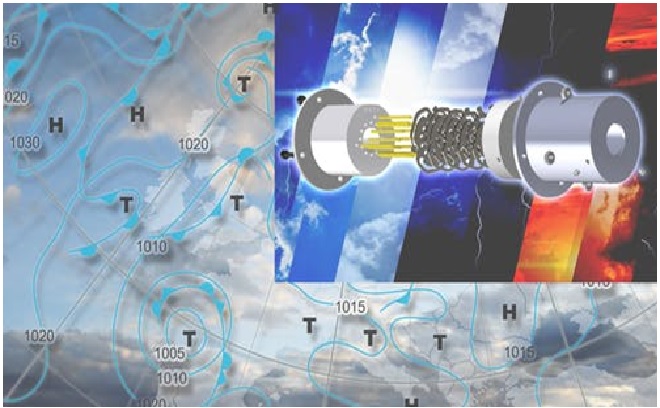New 3D Printed Plasma Sensor for Orbiting Spacecraft
Massachusetts Institute of Technology (MIT) researchers have developed a way to create low-cost plasma sensors, which are the first to get completely manufactured digitally, for orbiting spacecraft.In satellites, these plasma sensors are used to determine the chemical composition and ion energy distribution of the atmosphere.

Figure 1: 3D-printed sensors can be produced for tens of dollarsfor orbiting spacecraft.
Figure 1 shows thatthe 3D-printed sensors can be produced for tens of dollars in a matter of days. Due to the low cost and speedy production, the 3D-printed plasma sensors, also known as retarding potential analyzers (RPAs).
These sensors are ideal for CubeSats, which are used for monitoring the environment or predict the weather.The inexpensive, low-power and lightweight satellites are often used for communication and environmental monitoring in Earth's upper atmosphere. [1]
The MIT team used a process developed for 3D printing with plastics. It lets them create sensors with complex shapes that will survive the wide temperature swings spacecraft encounter in lower Earth orbit.The 3D-printed sensors perform as well as sensors made in cleanrooms, so they cost much less and do not take weeks of intricate fabrication.
One design was especially effective at capturing and measuring a wide range of plasmas, like those satellites would encounter in orbit. Another was well-suited for sensing extremely dense and cold plasmas, which are typically only measurable using ultra-precise semiconductor devices.
This high precision could enable 3D-printed sensors for applications in fusion energy research or supersonic flight. The rapid prototyping process could even spur more innovation in satellite and spacecraft design, Velásquez-García adds.
“If you want to innovate, you need to be able to fail and afford the risk. Additive manufacturing is a very different way to make space hardware. I can make space hardware and if it fails, it doesn’t matter because I can make a new version very quickly and inexpensively, and really iterate on the design. It is an ideal sandbox for researchers,” he says.
While Velásquez-García is pleased with these sensors, in the future he wants to enhance the fabrication process. Reducing the thickness of layers or pixel size in glass-ceramic vat polymerization could create complex hardware that is even more precise.
Moreover, fully additively manufacturing the sensors would make them compatible with in-space manufacturing. He also wants to explore the use of artificial intelligence to optimize sensor design for specific use cases, such as greatly reducing their mass while ensuring they remain structurally sound. [3]
References:
- https://gadgets360.com/science/news/mit-3d-printed-plasma-sensors-weather-prediction-cubesats-satellites-3202297
- https://www.machinedesign.com/3d-printing-cad/article/21247700/mit-develops-3dprinted-plasma-sensors-for-satellites
- https://www.amchronicle.com/news/press-release/researchers-3d-print-sensors-for-satellites/
Cite this article:
Sri Vasagi K (2022), New 3D Printed Plasma Sensor for Orbiting Spacecraft, Anatechmaz, pp. 358

